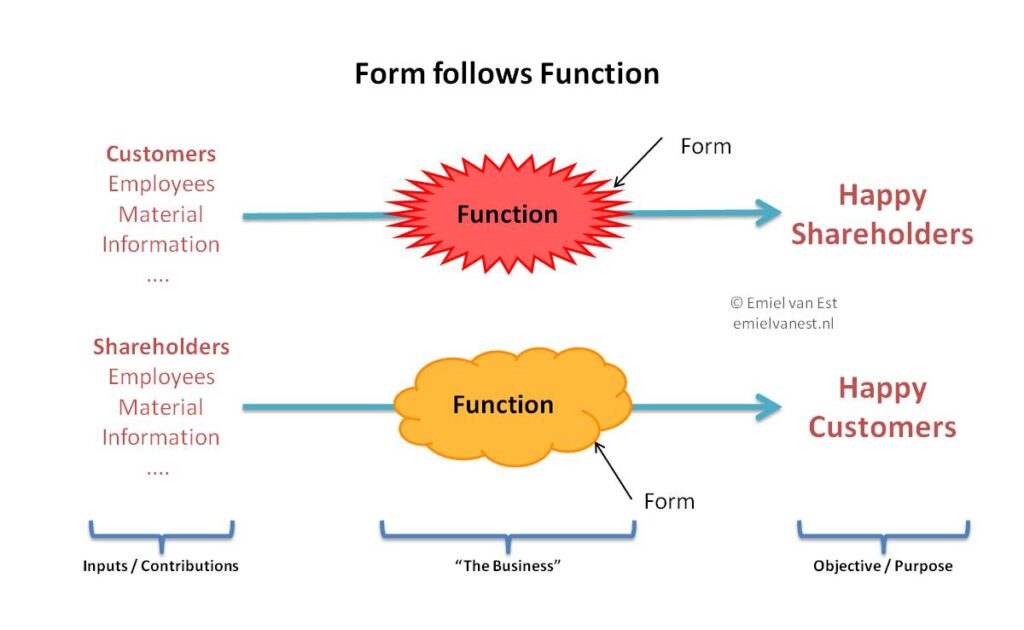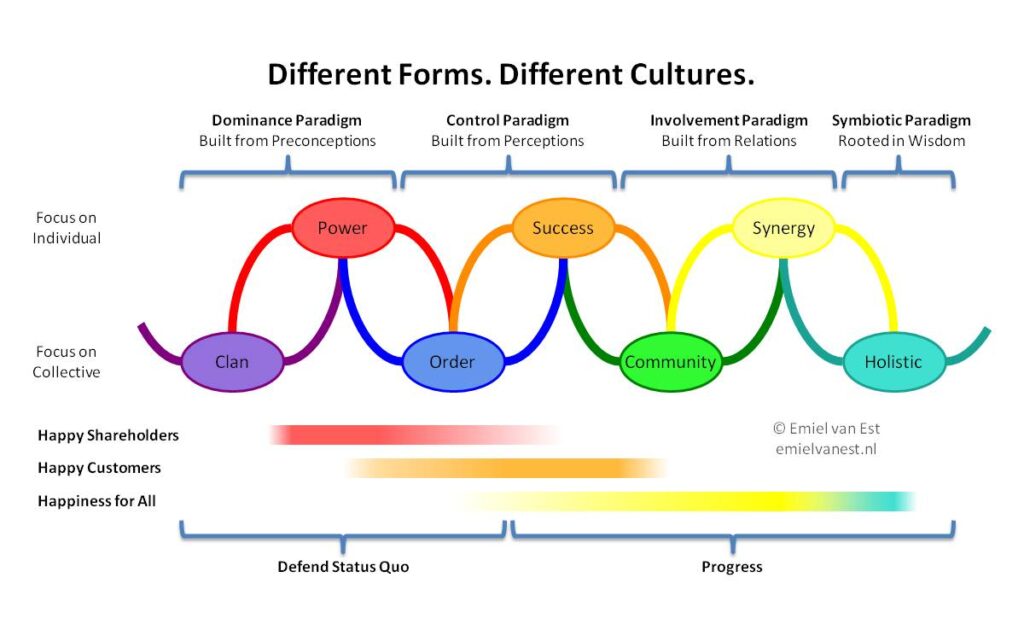About two years ago I started to see a pattern with my clients. In the past year I started addressing this notion more and more because it seems to be very relevant.
I noticed that many of the conversations in my clients organisations were focused on form. Changing form seems to be very popular. Just think about all the reorganizations that are being designed and “implemented”.
But form is merely appearance, fashion, style of the month.
What obstacle are you trying to address with this change of form?
One of my typical questions.
Inspired by a decade of practicing and teaching Toyota Kata.
Ideally, all changes that you initiate in an organisation address obstacles that stand in your way of achieving a strategic goal or a higher purpose.
So I started talking about Form follows Function. This is a bit hard to explain without a picture so I made one:

Happy Shareholders
If your objective is to have Happy Shareholders than the function of “The Business” logically becomes “Make Shareholders Happy”.
To do so you need to shape the activities in such a form that “The Business” can adequately perform its function to “Make Shareholders Happy”.
For “The Business” to function, inputs and contributions are needed.
Note that one of the inputs needed is the availability of spending customers.
Happy Customers
If your objective is to have Happy Customers than the function of “The Business” logically becomes “Make Customers Happy”.
To do so you need to shape the activities in such a form that “The Business” can adequately perform its function to “Make Customers Happy”.
For “The Business” to function, inputs and contributions are needed.
Note that one of the inputs needed is the availability of funding shareholders.
Different Forms, Different Cultures
I hope that with above image and explanation it is clear that if you have a different objective you need a different way of functioning and thus a different design, a different form of the business.
The function and form of the business also influences the culture of the business. Making shareholders happy is a different kind of business than one that wants to make customer happy. It is a different way of thinking, different things are important, different behavior is required.

I think that a business that sees making their shareholders happy as their primary objective, builds a culture that is very much centered around RED Power in Spiral Dynamics. Those who own the business get the benefits generated with the business. Those who own will dominate and defend the status quo.
Having the objective to make customers happy is a very sensible one if you are looking for ORANGE Succes in Spiral Dynamics . That business may even have happy shareholders. In that business it is very important to perceive what customers value and to deliver that consistently. Very much the domain of the Control Paradigm.
Focusing on making one group happy inevitably makes some other groups of stakeholders less happy or just outright unhappy. Is that just the cost of doing business?
Happiness for All
What if…
What if the objective of “The Business” would be to make All Happy.
How would that function?
What form would that take?
What kind of culture would that build?
What kind of environment or ecosystem would be needed?
I bet it does not look like most businesses we see today!
An historic note
Whether it be the sweeping eagle in his flight, or the open apple-blossom, the toiling work-horse, the blithe swan, the branching oak, the winding stream at its base, the drifting clouds, over all the coursing sun, form ever follows function, and this is the law. Where function does not change, form does not change. The granite rocks, the ever-brooding hills, remain for ages; the lightning lives, comes into shape, and dies, in a twinkling.
Sullivan, Louis H. (1896). “The Tall Office Building Artistically Considered”.
It is the pervading law of all things organic and inorganic, of all things physical and metaphysical, of all things human and all things superhuman, of all true manifestations of the head, of the heart, of the soul, that the life is recognizable in its expression, that form ever follows function. This is the law.
Lippincott’s Magazine (March 1896): 403–409.